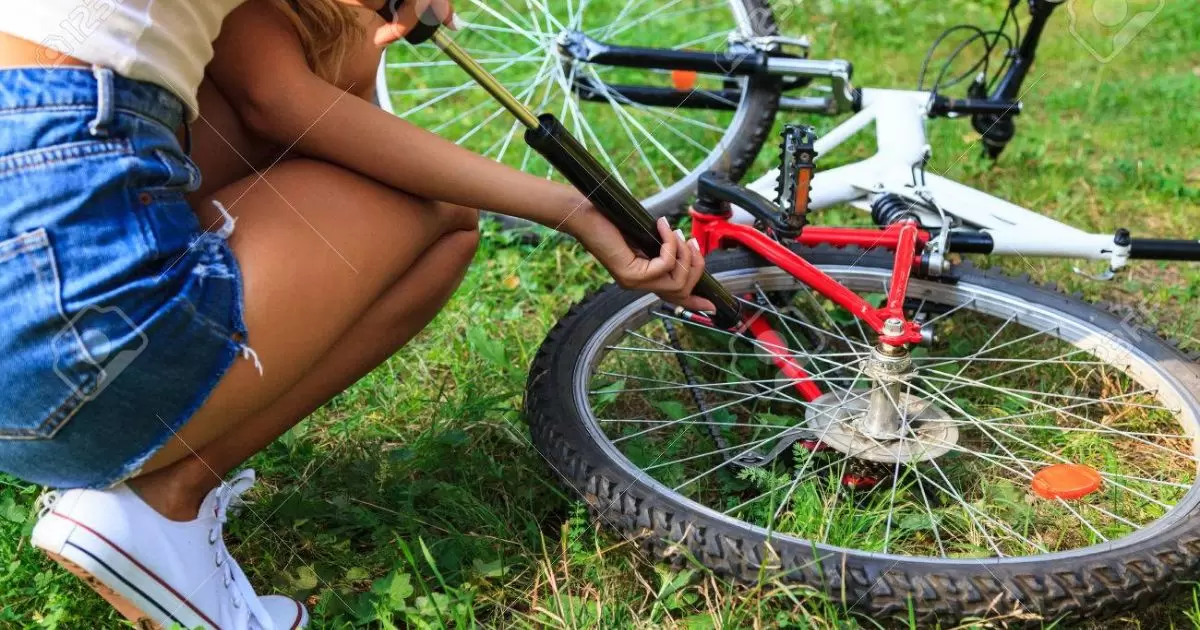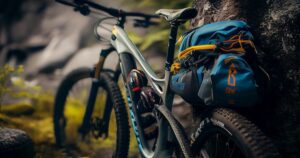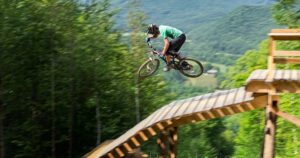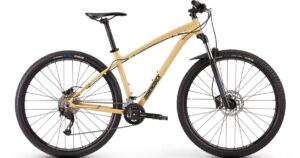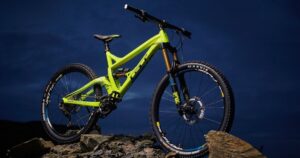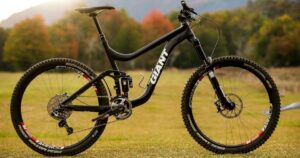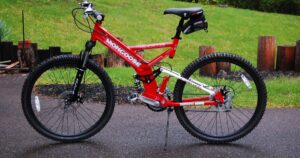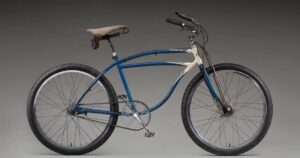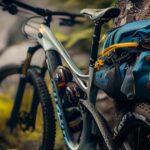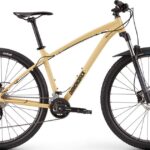Mountain bike tires are specialized rubber components designed to provide traction, stability, and control while riding on rough terrain. They come in various sizes, treads, and compounds, tailored for different trail conditions. These tires offer durability and grip, essential for navigating rocky, muddy, or uneven surfaces during off-road cycling adventures.
Ready to conquer any trail? Learn the ultimate trick: How to air up mountain bike tires for an unbeatable ride. Discover the straightforward steps to inflate your tires perfectly, ensuring maximum grip and performance on those adventurous paths. Gear up, pump up, and elevate your mountain biking experience with this essential know-how
To air up mountain bike tires, start by checking the recommended PSI (pounds per square inch) indicated on the tire sidewall. Use a bike pump with a pressure gauge to reach the suggested PSI level for optimal performance. Attach the pump securely to the valve, inflate the tire gradually, periodically checking the pressure, and adjust as needed for a smoother and more controlled ride on various terrains.
Understanding Your Mountain Bike Tires
Understanding your mountain bike tires is crucial for a smoother, safer ride. The tire’s width, tread pattern, and air pressure significantly impact your biking experience. A wider tire provides more stability and better traction on rough terrains, while a knobbier tread pattern enhances grip on muddy or loose trails.
Maintaining the right tire pressure is key for optimal performance. Lower pressure offers more cushioning and grip, but too low can risk pinch flats, whereas higher pressure reduces rolling resistance but sacrifices traction. Regularly inspecting your tires for wear and tear and adjusting pressure based on terrain and conditions ensures a balanced ride, boosting both confidence and control on your mountain biking adventures.
Essential Tools and Equipment
When hitting the trails with your mountain bike, having the right tools and equipment is crucial for a smooth ride. Essential tools like tire levers, a multitool with different wrenches, and a portable pump are must-haves. These help with quick fixes for flat tires or adjustments on the go, ensuring your ride isn’t interrupted by minor issues.
Additionally, specialized equipment such as a sturdy helmet, gloves for grip and protection, and proper footwear are essential for safety and comfort. Investing in a good quality bike lock for security when stopping along the way adds peace of mind. With these tools and equipment in hand, you’re geared up for an enjoyable and safe mountain biking adventure.
Valve Core Adjustment
Adjusting the valve core on mountain bike tires is crucial for optimal performance. Properly inflated tires ensure a smooth ride, better traction, and reduced risk of flats on rugged terrains. With a simple valve core adjustment tool, riders can easily regulate tire pressure, enhancing control and maneuverability while tackling various trails.
Regular maintenance of valve cores is key to preserving tire integrity. Mountain bikers should periodically check and adjust the valve cores to match the terrain demands, promoting an enjoyable and safe riding experience. Mastering this adjustment empowers bikers to fine-tune their tire pressure, maximizing performance and stability during thrilling off-road adventures.
Selecting the Right Pressure
Choosing the perfect pressure for your mountain bike tires is crucial for a smooth and safe ride. A higher pressure offers better rolling resistance on smoother surfaces, while a lower pressure provides improved traction and grip on rough terrains. Finding the right balance that suits your riding style and the type of trails you frequent is key to optimizing your biking experience.
Factors like your weight, terrain conditions, and tire width influence the ideal tire pressure. Experimenting with different pressures within the recommended range can help you determine what works best for you. Regularly checking and adjusting tire pressure based on the riding conditions ensures a comfortable and controlled ride, enhancing both performance and enjoyment during your mountain biking adventures.
Regular Maintenance Tips
- Enhanced Performance: Regular maintenance, such as cleaning and lubricating the chain, adjusting gears, and checking tire pressure, keeps your bike running smoothly. This enhances its performance, ensuring efficient power transfer and smooth gear changes.
- Increased Durability: Routine maintenance helps prevent premature wear and tear on vital components like the chain, cassette, and brakes. This prolongs the lifespan of your bike, saving you money on replacements and repairs.
- Improved Safety: A well-maintained bike is a safer bike. Regular checks on brakes, tire condition, and overall bike functionality reduce the risk of mechanical failures while riding, ensuring a safer experience on the trails.
- Cost Savings: Investing time in regular maintenance can save you money in the long run. Small adjustments and timely replacements prevent major issues that could lead to expensive repairs or part replacements.
- Optimal Riding Experience: A properly maintained bike offers a more enjoyable ride. It’s responsive, reliable, and comfortable, allowing you to focus on the trail ahead and fully immerse yourself in the thrill of mountain biking.
Troubleshooting Common Issues
Troubleshooting common issues with mountain bikes often involves simple yet effective solutions. When faced with shifting problems, checking cable tension and derailleur alignment can resolve many issues. For brake troubles, examining brake pads for wear and adjusting cable tension might restore proper functionality.
Another frequent concern involves suspension performance. Confirming the appropriate sag settings and inspecting for any leaks or damage in the suspension system can enhance the bike’s ride quality. Furthermore, regularly cleaning and lubricating the chain can prevent gear slippage and extend the bike’s lifespan. Remember, a little proactive maintenance can save a lot of hassle on the trails!
Tips for Optimal Performance
To maximize your mountain bike’s performance, start by ensuring proper tire pressure and suspension setup. Optimal pressure enhances traction and control, while adjusting gears on a mountain bike according to the terrain smoothens the ride. Regularly clean and lubricate the chain to maintain smooth gear shifts and prevent rust. Additionally, understanding your bike’s gear system and learning to fine-tune it can significantly enhance your riding experience. Mastering gear adjustments allows for seamless transitions, optimizing efficiency and comfort while tackling various trails.
For top-notch mountain biking experiences, prioritize bike maintenance and familiarize yourself with trail conditions. Check brake pads regularly to ensure effective stopping power and inspect the frame for any cracks or damages. Additionally, invest in quality protective gear to enhance safety and confidence on rugged terrains.
Storing and Transporting Your Bike
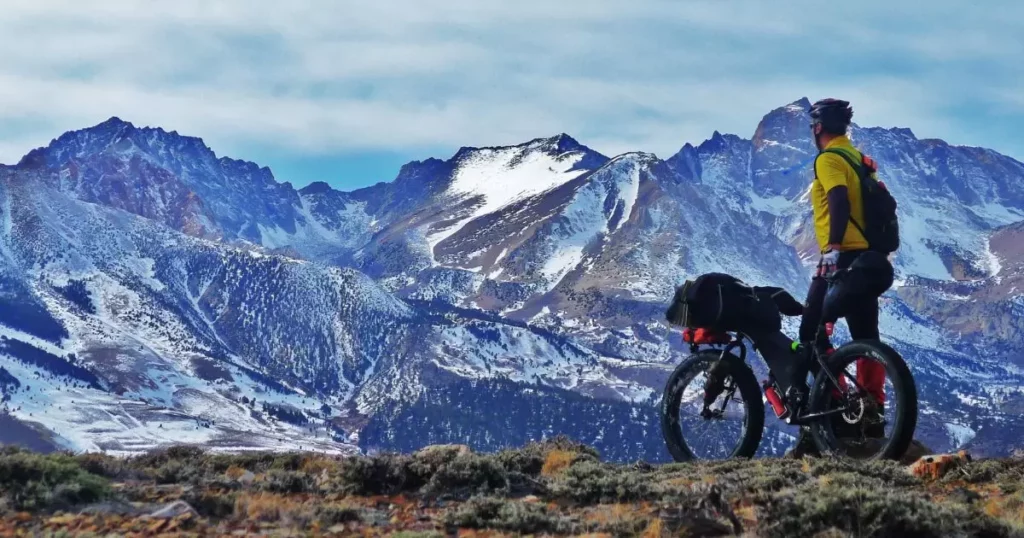
Storing your mountain bike properly ensures its longevity. Keep it in a dry, cool place to prevent rust and corrosion. Consider hanging it on a bike rack or storing it on a stand to avoid any damage from leaning or falling. For added protection, cover it with a bike cover to shield it from dust and scratches.
Transporting your mountain bike demands careful handling. Use a sturdy bike rack or a specialized bike carrier to secure it to your vehicle. Double-check the bike’s attachment to prevent any wobbling during transit. Additionally, consider removing the front wheel or using protective padding to safeguard both your bike and your vehicle from scratches or dents.
Tubeless Tire Sealant Maintenance
Maintaining tubeless tire sealants for mountain bikes is crucial for optimal performance. Regularly inspect the tires for cuts or punctures, which might require a sealant top-up or patching. Refresh the sealant every few months to ensure its effectiveness and prevent dryness, which could compromise its sealing ability on the trails.
When it comes to mountain biking, the quality of your tires, including Continental bicycle tires, significantly impacts your ride. Keeping tubeless tire sealants in top condition is key. Make it a habit to check for any leaks or damage, addressing them promptly to maintain a consistent and reliable seal on your rides. Periodically adding sealant and cleaning the system will go a long way in ensuring your mountain bike adventures are smooth, safe, and hassle-free.
Impact of Tire Pressure on Bike Performance
| Tire Pressure | Impact on Performance |
| Low Pressure | Increased traction on rough terrain but higher risk of pinch flats. Improved comfort but slower rolling speed. |
| High Pressure | Better rolling efficiency on smooth surfaces but reduced traction on rough trails. Higher risk of bouncing or skidding. Increased vulnerability to impacts and discomfort on uneven terrain. |
| Optimal Pressure | Balanced traction and rolling efficiency. Offers good grip on varied terrain while minimizing the risk of flats and maintaining a comfortable ride. Ensures control and stability without compromising speed. |
Finding the right tire pressure for your mountain bike significantly impacts your riding experience. Low pressure suits rugged trails, offering better grip and comfort, but increases the risk of flats. High pressure favors smoother surfaces, boosting speed but compromising traction and comfort. Optimal pressure strikes a balance, providing grip, efficiency, and comfort across different terrains, ensuring a smoother, controlled ride.Top of Form
Upgrading Your Pumping Equipment
Upgrading your mountain bike’s pumping equipment can greatly enhance your riding experience. Consider investing in a high-quality mini-pump or a CO2 inflator for quick and efficient tire inflation on the trails. Upgrading to a reliable and portable pump ensures you’re prepared for unexpected flats, letting you focus more on enjoying your ride without worrying about tire pressure.
Exploring tubeless tire setups can complement your pumping upgrades. Tubeless tires reduce the risk of punctures and allow for lower tire pressures, providing better traction and a smoother ride. Pairing upgraded pumping equipment with tubeless tires can significantly boost your biking adventures, offering reliability and performance when tackling rugged terrains.
Frequently Asked Question
Do I need a special pump for mountain bike tires?
A bike pump with a pressure gauge is ideal. Look for one compatible with your valve type (usually Presta or Schrader) for efficient inflation.
How often should I check my tire pressure?
Regularly! Before each ride is best. Changes in temperature and riding conditions can affect tire pressure, so keeping them properly inflated is crucial for performance and safety.
Can I use a gas station air pump for my bike tires?
Yes, but cautiously. Gas station pumps can work, but they often have high pressures that can quickly overinflate bike tires. Use short bursts and frequently check the pressure.
What happens if my tire pressure is too low/high?
Low pressure can lead to a sluggish ride, increased chance of pinch flats, and less control. High pressure can make the ride uncomfortable, reduce traction, and potentially damage the tire or rim. Adjust within the recommended range for the best ride.
Conclusion
Mastering how to air up mountain bike tires is key to unlocking a smoother, more exhilarating ride on any trail. By understanding the right pressure, using the appropriate pump, and regularly checking your tires, you ensure optimal performance and control. It’s not just about inflating tires; it’s about customizing your biking experience, enhancing traction, and increasing your confidence as you tackle varying terrains.
Gear up, grab that pump, and take charge of your adventure. With this essential knowledge in your toolkit, you’re set to conquer any trail with ease, knowing that your tires are primed for the ride ahead. Whether it’s navigating rocky paths or cruising through muddy tracks, properly aired tires will elevate your biking escapades to new heights of excitement and enjoyment.
